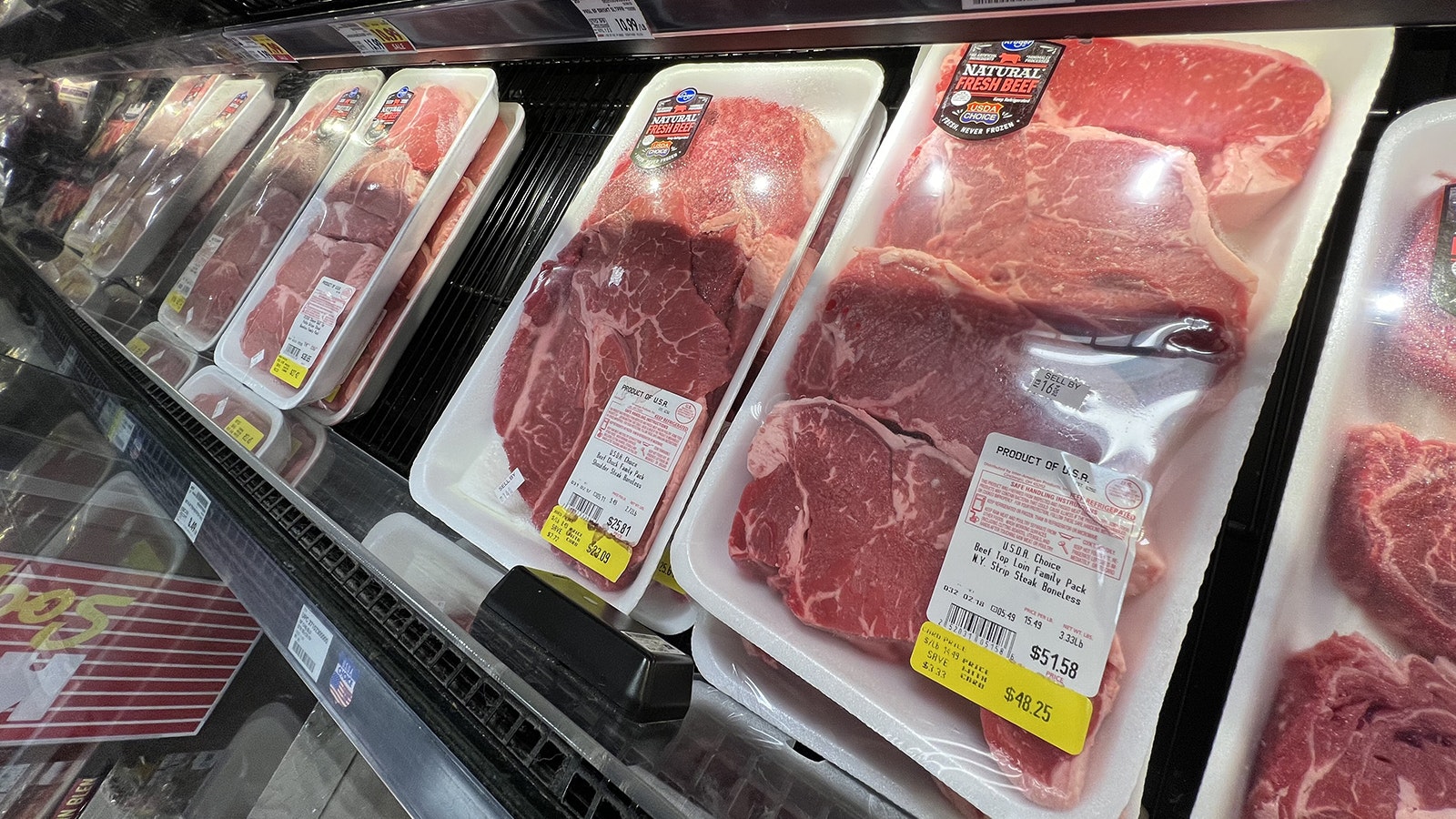Anyone who loves to throw a good burger or steak on the grill won’t be surprised ranchers are realizing record profits and consumers are paying premium prices at grocery stores.
The contrast between these trends stems is the first lesson taught at business schools everywhere: supply and demand, or vice versa. For the beef industry, including Wyoming ranchers, high demand and limited cattle supply allows them to get top dollar for their livestock, maximizing profits in the current market.
“It’s a supply and demand issue,” said state Rep. Bob Davis, R-Rock Springs, who is also a rancher by trade. “Beef is in high demand, but ranchers don’t have the inventory to fill that demand. That’s bringing prices up and determining the price that the processors are willing to pay the ranchers for the beef.”
At a recent National Cattle Convention held in Florida earlier this month, industry experts from CattleFax presented an optimistic outlook, projecting record prices across all classes of cattle for the year ahead.
Drought Discourages Breeding
Several factors propel the bullish forecast, with a yearslong drought being the most significant. These dry spells in the Western and Midwestern regions of the U.S. have hindered efforts to expand herds and contributed to their continued decline, Davis said.
“We’ve been in a drought for at least four years,” he said. “And ranchers have had to sell down their inventory because of a lack of feed, lack of pasture, lack of water. We just can’t compete with mother nature.”
Severe drought causes cattle to stop breeding, resulting in a scarcity of calves for sale, which causes ranchers to miss out on crucial income.
“We had to sell half our herd over those four years. We started with 300, but when there’s a drought they don’t breed, so they’re dead weight and we don’t make money if they aren’t breeding cattle we can spell,” said Marilyn Wood, a southern Utah rancher.
To replenish the depleted inventory, the Wood family would need to spend about $1,500 per head at current prices, amounting to a significant $225,000, she added.
However, realizing a return on that investment would require a two-year process. After acquiring the calves, a year is needed for it to mature and become eligible for breeding. Then it’s an additional year before the bred calves can be sold.
Rebuilding
Furthermore, achieving a full return on that investment depends on several factors, including the selling price of the beef compared to the initial purchase price. There is also uncertainty about whether all calves will successfully breed.
“Most ranchers don’t have $225,000 to go out and replace 150 head of cattle,” Wood said. “It takes a lot of years to rebuild that inventory.”
The most recent USDA inventory report reveals a historic low in cattle numbers, with a 2% decrease to 28 million head. This marks the lowest inventory level in 50 years, a trend expected to continue for three more years.
The low inventory also creates problems for ranchers needing to buy cattle to replenish their herds.
“There isn’t enough cattle on the market for ranchers to just go out and buy more,” Wood said. “We have to build our inventory with the herds we already have, and that takes years.”
While 2023 brought favorable weather conditions overall for cattle ranchers, it wasn't enough to declare an end to the drought, according to the National Oceanic and Atmospheric Administration's 2023 drought report.
The Great Plains region, spanning from Montana and North Dakota to Texas, endured three years of unusually dry conditions. Above-average precipitation in 2023 brought some relief, especially in the Western areas. But the area still didn’t fully bounce back from the deficits of the previous three years.
Scientists have dubbed the drought ongoing in the Western region for more than two decades a "megadrought.”
The Southwest region also has experienced several years of drought, with 2023 providing some relief, but not sufficient to fully alleviate the area from drought conditions.
Even if the drought lifts and ranchers can replenish their inventory, shoppers aren’t likely to find much relief at the grocery store in the near future.

Big Beef Business
Many ranchers say this is largely because of the influence of major packing conglomerates on the meat processing industry.
“These corporations are the biggest reason why we are seeing the prices we are seeing,” said Tyler Lindholm, fifth-generation rancher and state director for the free-market advocacy group Americans for Prosperity.
Referred to as the "big four," these companies wield control over the market, dictating the price at which beef is sold, Lindholm said. Critics argue this dominance amplifies market instability and undermines the interests of consumers and ranchers.
“These four major packing corporations are the problem,” Lindholm said. “Yes, right now ranchers are making a profit. But it’s just a bubble and like bubbles, they pop. And I don’t expect these processing companies, who really are responsible for setting the price you pay at the store, to bring the price back down.”
Lindholm also stressed the importance of legislative measures to address the overwhelming control exerted by these corporations to ensure fairness and stability in the market.
As part of this, Lindholm advocates for state laws that enable people to buy beef directly from local ranchers, bypassing the big companies. He said direct-market friendly laws pair consumers with fresher and potentially higher quality products, but also enable them to support local businesses and farmers.
Additionally, he would like to see more state-inspected packaging facilities. This way, ranchers wouldn’t have to rely on big corporations to process and package their beef, giving them more control over their products and ensuring a fairer marketplace.





